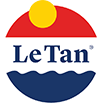Hello sun smart customer!
Did you know that by the age of 70, 2 in 3 Australians will be diagnosed with skin cancer? Scary, huh? This statistic shows us just how important protecting ourselves from the sun is, and the dangers that come with spending time in the sun. Never fear, we have you covered. Although no sunscreen blocks out 100% of the sun’s rays, but they all do a pretty good job at protecting you.
How often should I apply sunscreen?
Sunscreens are effective 15-30 minutes after application, so be sure to apply before you intend on heading out in the sun! It’s also really important to reapply sunscreen at least every 2 hours, more frequently if you are sweating, swimming or towel drying. The recommended amount of sunscreen to apply is 1 teaspoon per limb and face, then 2 teaspoons for the rest of body. Your face is especially important to keep protected at all times. Our Invisible Face Fluid SPF50+ is perfect for use all-day every day, as it is extremely lightweight and leaves no residue or greasy feel. Our SPF50+ Face BB Creams are also perfect for use at all times as the tinted formula can be used in place of foundation.

What does “broad spectrum protection” mean?
The term “broad-spectrum protection” refers to sunscreens, like ours, that protect against both UVA & UVB rays of the sun. Ultraviolet A (UVA) rays are responsible for causing skin ageing, whilst Ultraviolet B (UVB) rays are the ones responsible for burning your skin. UVA radiation is strong all day and all year long, they are 400 times more intense in the summer and during mid-day hours (10 a.m. to 4 p.m.). Remember to constantly reapply while you’re having fun out in the sun!
What SPF do I need?
All levels of SPF are effective in filtering the suns rays to protect the skin, the higher the SPF, the higher protection. SPF stands for “Sun Protection Factor”, where the SPF number indicates how well the sunscreen protects against the sun. Some might think the number means % of protection, but this is not the case. It is the amount of time that your skin would be protected from the sunscreen compared to not wearing any sunscreen at all.
For example a sunscreen with SPF 30 would protect you 30x more from the sun than if you were in the sun without sunscreen. The “+” sign means more than, an SPF50+ sunscreen must provide at least SPF60 in testing to remove margin for error. The level of sun protection pretty much maxes out at SPF50+, so for the highest protection sunscreen, choose one with SPF50+. We recommend Coconut Lotion SPF50+ 125ml & Coconut Spray SPF50+ 250ml.
What’s the difference between a chemical and physical sunscreen?
Chemical sunscreens are the most common type of sunscreens, that are usually lighter on the skin and provide more complete protection against UV rays. Chemical sunscreens use active ingredients that absorb UV and transform them into heat, whereas physical sunscreens use minerals that sit on top of the skin and reflect UV rays. Decisions, decisions!
All Le Tan sunscreens are chemical sunscreens and are completely safe for all types of skin. Please patch test first if you aren’t sure and seek medical advice if you have any irritation!

How else can I protect myself?
Slip, slop, slap, seek, slide. Slip on a shirt, slop on sunscreen, slap on a hat, seek shade and slide on some shades.
UVA rays can pass through your eye's cornea and reach the lens and retina, that’s why it is also important and recommended to wear sunglasses whilst spending time outside. Did you know you can get a sunburn on your eyes? Photokeratitis occurs when UV rays damage the eyes, although temporary can be very painful, ouch. Stay safe out there and be sensible!
Does sunscreen go off?
Yes, sunscreens have an expiry date. Sunscreens are listed by the Therapeutic Goods Administration (TGA), who are a government body responsible for regulating therapeutic goods within Australia. All sunscreens by law are required to have an expiry date, and it will be likely printed on the back or the bottom of the bottle. For your safety, please do not use sunscreen past its use by date.
Stay safe in the sun with a high protection sunscreen and reapply frequently!




